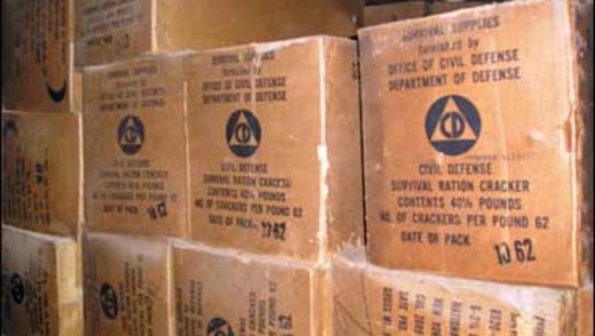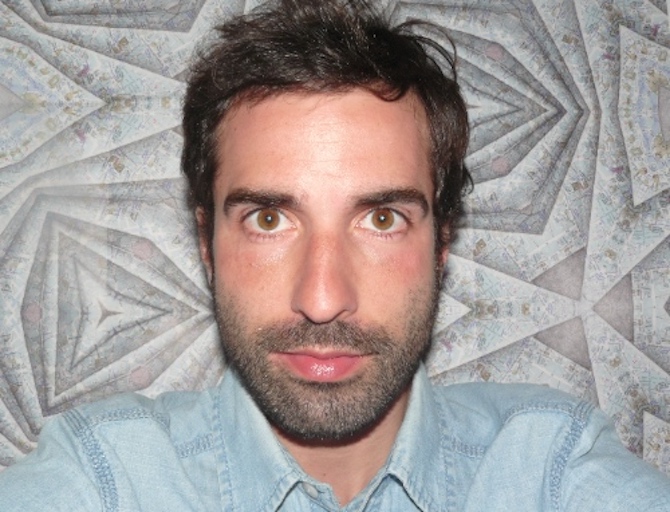Search
To search for an exact match, type the word or phrase you want in quotation marks.
A*DESK has been offering since 2002 contents about criticism and contemporary art. A*DESK has become consolidated thanks to all those who have believed in the project, all those who have followed us, debating, participating and collaborating. Many people have collaborated with A*DESK, and continue to do so. Their efforts, knowledge and belief in the project are what make it grow internationally. At A*DESK we have also generated work for over one hundred professionals in culture, from small collaborations with reviews and classes, to more prolonged and intense collaborations.
At A*DESK we believe in the need for free and universal access to culture and knowledge. We want to carry on being independent, remaining open to more ideas and opinions. If you believe in A*DESK, we need your backing to be able to continue. You can now participate in the project by supporting it. You can choose how much you want to contribute to the project.
You can decide how much you want to bring to the project.

March, 2006. A surveyor finds a strange box under Brooklyn Bridge. Written on it: “To be used only under enemy attack”. Date: “1957”. The box is taken to a laboratory, where it’s determined it’s a time capsule. A device, into which objects, documents, seeds, etc. are introduced, created in the past to be opened in the future. Designed in this case during the paranoid era of the Cold War to be unpacked in the case of a nuclear attack. The experts open this box. A packet. They unwrap it. Approximately 352.000 salted crackers. A bittersweet sensation runs through the body of the experts. More bitter than sweet.
Various artistic projects have for a while now been based on the idea of the time capsule, to reflect on the present rather than the future. Works of art designed to be seen by tomorrow’s spectators. The idea of the artist working without the pressure of the market, fashions, or even the contemporary spectator, attains a new dimension here. Specifically, the fourth.
Not long ago the artist Isabel Marcos in the Centro de Arte Dos de Mayo, proposed Un futuro así contado. By way of a guide to the future, Zhora Burgue (interpreted by Isabel Burguete) she showed the spectators a series of objects that served to interpret recent events in Móstoles, where CA2M is located, from 2015 up until 2025. World wars, the consequences of climate change, uprisings…told through stones, leaves or benches. Humour, reflection and the future, in the same artistic project.
We don’t know if Marcos knew about the Time capsules initiated by Andy Warhol, (already discussed, as were those of Ant Farm, a while back in A*DESK). Warhol began to save things in 1974. He created 612 time capsules. The artist wrote of them in his diary: “Some day I’ll sell them for $4000 or $5000 each. I used to think I’d charge 100, but now I think this is my new price”. Warhol died in 1987, and his boxes were opened in 1994, full of information about his daily life. What did you expect from an egocentric artist, crackers?
The idea of Iván Argote and Pauline Bastard is more participative. In 2013 they designed the Munich Time Capsule, that gathered together messages, documents and the desires of the citizens of Munich to be watched over for 100 years and revealed in 2113 (there is a petition for it to be exhibited on this date in the same city). The content remains hidden in a hollow rock that we can see exhibited in the group exhibition curated by Sonia Fernández Pan El futur no espera (in La Capella, Barcelona, 2014). Messages can still be sent.
A year after this, which we won’t see because we’ll be dead (I will be for sure) it will be possible to read the books of Future Library in Oslo, launched by the Scottish artist Katie Paterson. Each year a writer is invited to send an original manuscript that will be read in 2114. Amongst others, Margaret Atwood has already sent her text. The library where they will be housed will be ready in 2018, and the trees, that will supply the leaves for these volumes, have already been planted. Books written for people who have not yet been born.
Another pair of more modest projects have been designed to be uncovered in our lifetime. The first is to be found in the Centro-Museo Artium, in which the citizens of Vitoria lodged whatever they wanted in a time capsule that will be unveiled in May 2022. An “in progress” experience was also made in Chile that will end in 2022. The space Local, in Santiago de Chile, made an open call for an exhibition of eight young artists, who signed, along with the owners of Local, a contract in which they undertook to exhibit together again in the cited 2022. The experience ironizes about the concept of the “emerging artist”, of commercial gallery contracts and the Chilean art circuit. Who knows if in the following decade these artists will be eight “Alfredo Jaar”.
Let’s hope this project won’t end up as shoddy as the Cápsula del tiempo organised by the collective Agencia de Viaje on the occasion of the Universal Exhibition in Seville 92. People were invited to give objects and messages for the future, incrusting them in a sort of river of petrified lava that gives off a bad whiff from the images alone. Curiously enough this work was previously censured by the city Córdoba, that in principle was going to house it, Córdoba, for political foul-ups (not its ugliness).
To make such a shabby job of it, better to “do it yourself”. There are webs, which explain in a simple manner how to elaborate your own time capsule. So your grandchildren can see it, so it can be used after an enemy attack or so future humans can discover things about what past humans worried about in their present. You’ll find yourself faced with a strange sensation: Why leave memories for the future?
Analysing the examples given, one gleans different motives; from a timeless egocentrism (Andy Warhol), to an alarm call regarding ecological, political and social issues (Isabel Marcos), the paranoia of the Cold War, a reflection about the “career of the artist” (Local) or an experimental, playful impulse that borders on the absurd (Argote and Bastard, Paterson).
The reflection expands the possibilities: who does the artist work for and how does this modify her way of tackling the work? More interesting than ever, art today is an interactive tool that needs the spectator, the artist lives off feedback. The disjointed theory of Boris Groys (Política de la inmortalidad, Ed. Katz, 2008) remains latent along with the change of the paradigm of the creator, who no longer speculates with “reaching a work for posterity” so much as flounders in an “Always/Still” (remembering the exhibition Everstill curated by Hans Ulrich Obrist in the Casa-Museo de Lorca in Granada in 2007). In a present in which “ Everything happens now” (Present Shock. When everything happens now, Douglas Rushkoff, Ed. Current, 2013) we continue our inquiry into what art serves for. Perhaps when the box is opened in the near or distant future, the motives will be better understood.

His intention is to continue to improve his writing of art criticism; everything else is enjoying and learning from contemporary proposals, establishing other strategies of relations, either as a contributor to magazines, editor of a review, curator or lecturer. As a backpacking art critic, he has shared moments with artists from Central America, Mexico and Chile. And the list will continue. Combating self-interested art, applauding interesting art.
"A desk is a dangerous place from which to watch the world" (John Le Carré)